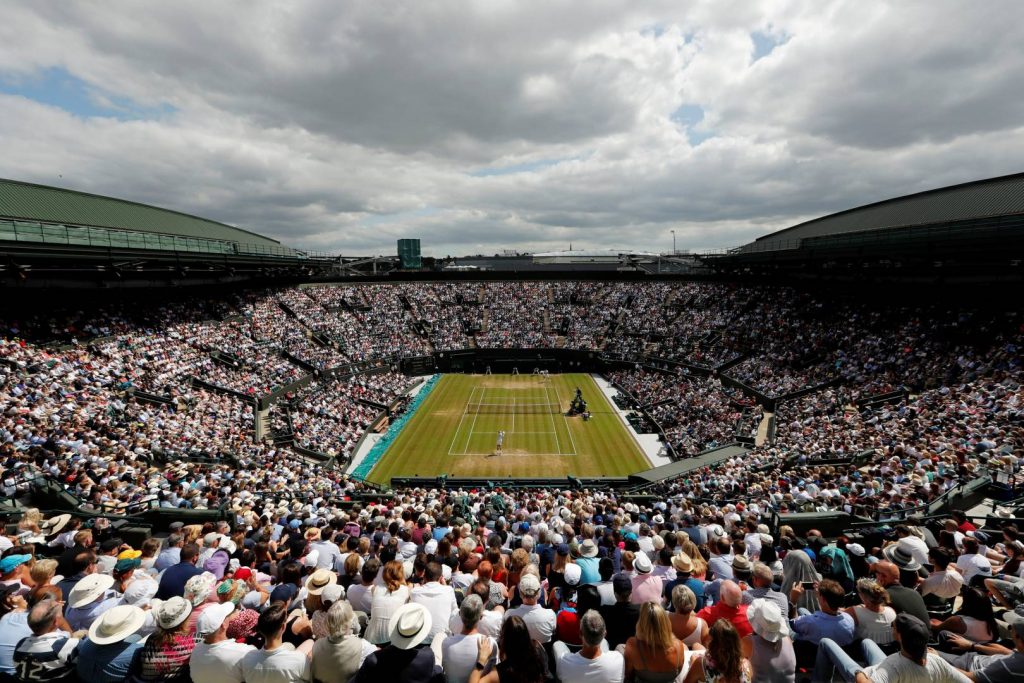Wimbledon Viewership Remains Strong Despite Impact Of Euros Clashes
July 20, 2021
Wimbledon was back on our screens this summer after a year off due to the pandemic, but how did fans at home respond to the tournament’s return? At the same time as the tennis event was staged, EURO2020 was also being held, Andy Milnes, Head of Client Services for Nielsen Sports looked at how UK TV viewers reacted to Tennis’ showpiece event.
After last year’s cancellation due to the pandemic, the 2021 Wimbledon Championships went ahead, albeit with a few differences. The traditional queue was absent, all tickets were sold online and there were fewer spectators on the ground to witness the action prior to the finals.
While the event eventually allowed for full capacity crowds during the finals, the initial 50% capacity didn’t impact the way people viewed at home. As a permanent fixture of the British sporting calendar every year, Wimbledon has become more of a cultural event, according to Nielsen Fan Insights. One that sporting and non-sporting fans alike have grown to love, which was reflected in the viewership figures once again, remaining consistently high year on year.
“Overall, the combined viewership is slightly down compared to 2019. This can mostly be attributed to the much more congested viewing schedule and competition for audience share.”
Looking at the viewership for the Finals alone we can see that the Ladies Final attracted an average audience of 2.54m vs. 2.49m in 2019. Similarly, the Men’s Final attracted an average audience of 5.08m vs 6.00m in 2019, only a small decline despite many English fans no doubt making plans to watch the final of the Euros later in the evening.
Overall, the combined viewership is slightly down compared to 2019. This can mostly be attributed to the much more congested viewing schedule and competition for audience share, with the Euros, Lions Tour and Home Nations rugby also occupying free to air TV slots.
While the audiences remain largely consistent with what we expected to see pre-tournament, there seems to have been a slight move towards showing the bigger matches, often involving British talent, towards later start times to encourage larger viewership’s.
This was also driven by excellent performances on display from young British talent resulting in some exciting ties with big players. For example, Emma Raducanu’s early success as a British wild card resulted in her 4th round tie with world number 51 Alja Tomljanovic, giving her a chance to play on Centre Court.

Similarly, Britain’s’ Katie Boulter and Cameron Norrie were also given the opportunity to play on Centre Court during their ties with Aryna Sabalenka and Roger Federer respectively. This British success coupled with Andy Murray’s resurgence all contributed to spikes in TV viewership figures at various points during the tournament. For instance, Andy Murray and Emma Raducanu’s matches alone attracted almost double the audience of matches scheduled at the same timeslots in 2019.
While there was a large interest in the British talent on show at Wimbledon, the knockout stages of the Euros still managed to have an impact on viewership. For example, Andy Murray’s third round match vs Denis Shapovalov clashed with both Switzerland vs Spain (5pm KO) on ITV which attracted 1.7m viewers (peaking at 3.2m for the penalties at 7.35pm) and Belgium vs Italy on BBC 1 (8pm KO) which generated 7.2m viewers and 38% share of audience. Murray’s match started at 7pm on BBC2 and had an average audience of 2.6m and peak of 3.7m at 7.55pm, which was considerably lower than his second-round match vs Otte which benefited from not clashing with the Euros and being a more competitive game. The numbers from that match drew an average audience of 4.36m, which peaked at 6.75m in the deciding set.
“Despite the limited capacity at this year’s event, Wimbledon has been able to adapt to the new post-covid age which prioritises digital activation over those on site.”
Despite the limited capacity at this year’s event, Wimbledon has been able to adapt to the new post-covid age which prioritises digital activation over those on site. Wimbledon has always been a leader in digital activation and while this pivot has most certainly impacted sponsors ability to engage with fans it has also advanced their digital offering.
This improved digital offering combined with the consistently high audiences results in a reliable and exciting opportunity for brands to engage with fans and gain exposure to new audiences during this unprecedented summer of sport.



